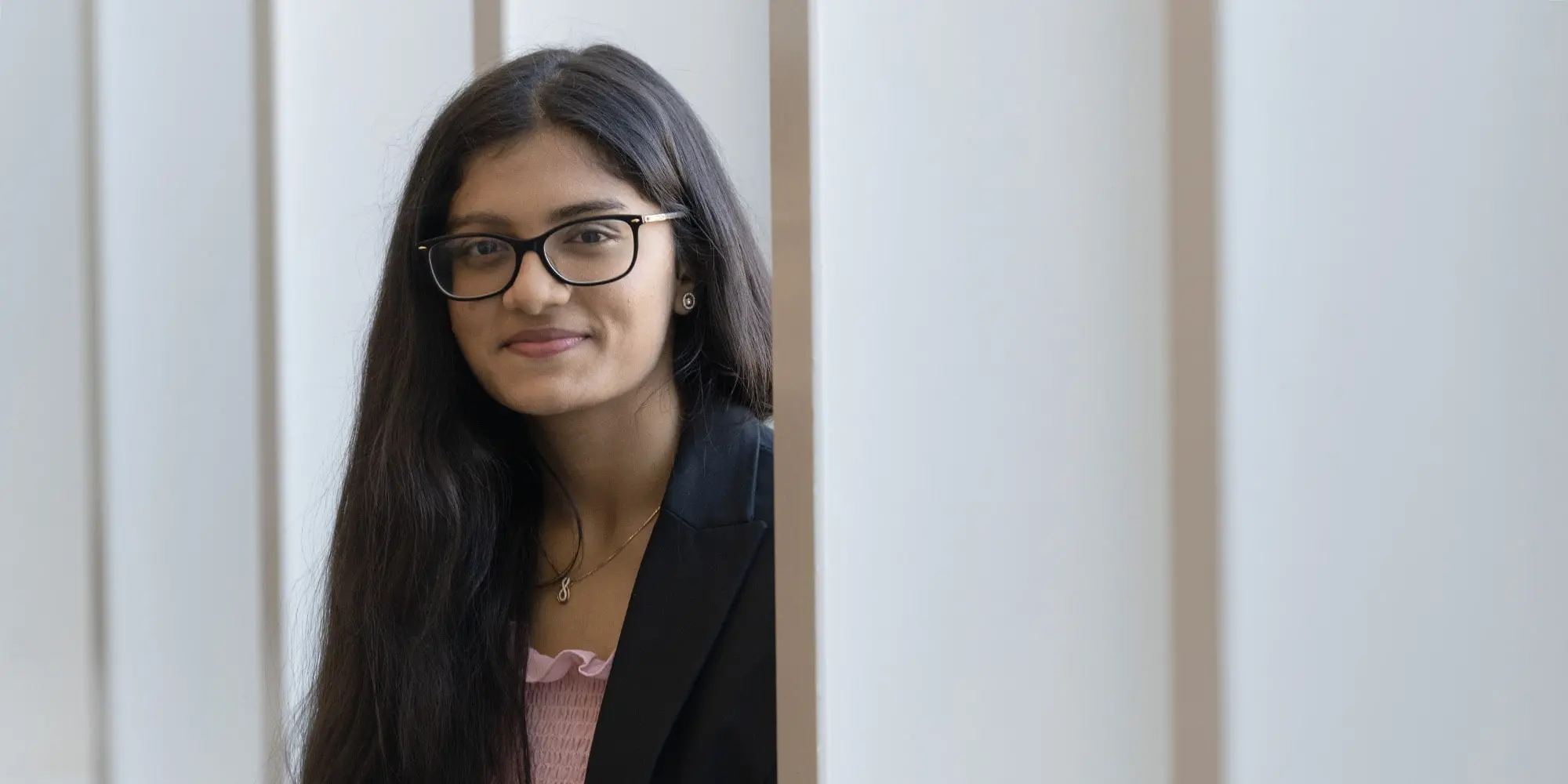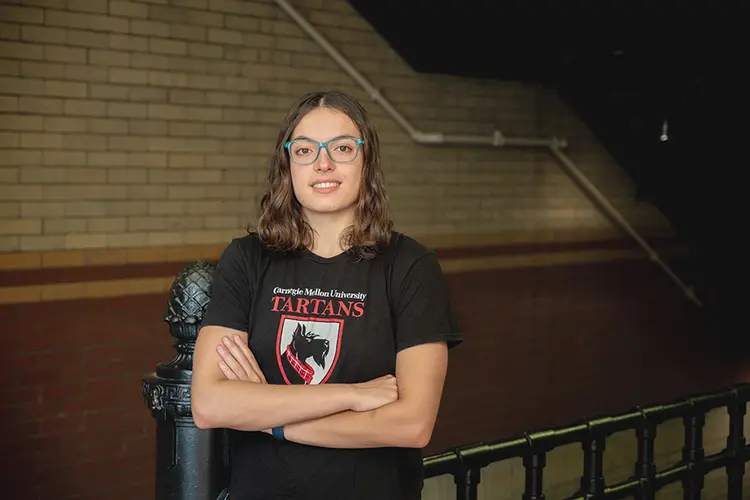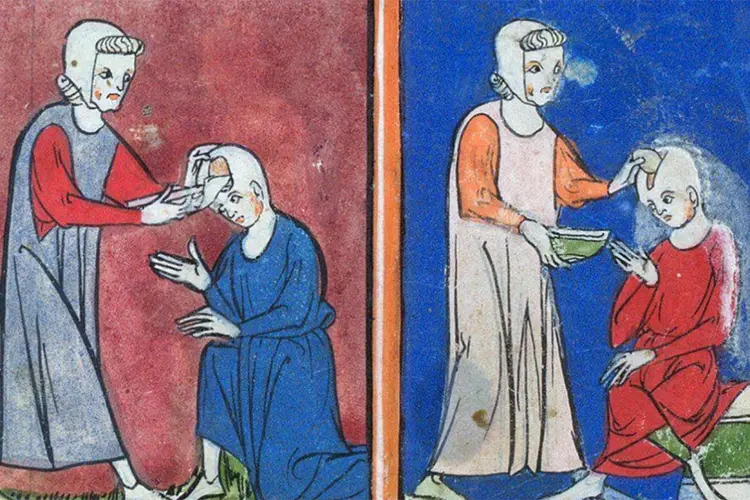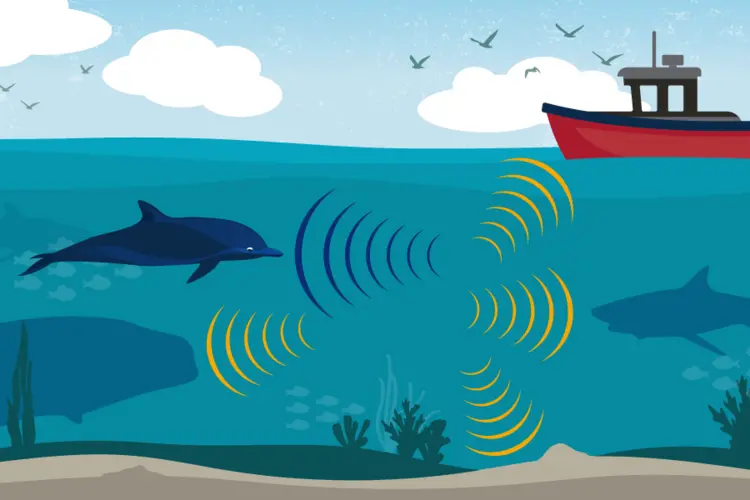
Undergraduate Aids Fetal Research
Media Inquiries
Erin Anand is an international student from Dubai, who read something about Carnegie Mellon University when she was younger that piqued her interest.
"I remember reading about CMU and this professor who 3D-printed human hearts(opens in new window)," Anand said. "It was all very appealing."
Anand is now a CMU sophomore with a major in electrical and computer engineering(opens in new window) in the College of Engineering(opens in new window). She was the recipient of a Summer Undergraduate Research Fellowship(opens in new window) (SURF) award in 2022, which allowed her to conduct 3D anatomical structure modeling as part of research that explored ways to better obtain the pulse oximetry of a fetus.
"I came to CMU as an ECE major, but I knew that I wanted to focus my research on something that was more application-based in the biomedical field," Anand said.
She reached out to Jana Kainerstorfer(opens in new window), associate professor of biomedical engineering, whose project had the main premise of reducing unnecessary cesarean sections. And one of the problems the researchers in Kainerstorfer's lab were trying to solve was how to determine the blood oxygen level (pulse oximetry) of a fetus.
"The main reason why doctors do (C-sections) is because they're concerned that the fetus is not getting enough oxygen," Anand explained. But doctors tend to push for C-sections even when the fetus is not facing this problem, she added. "It's basically associated with a very high false positive rate, which means more C-sections are being conducted than actually need to be."
Kainerstorfer said Anand's part of the project was focused on helping figure out how to build a device that could measure fetal pulse oximetry through the maternal abdomen.
A pulse oximeter can be placed on the finger to measure the blood's oxygen level. But the infrared light from the device only has to travel through about an inch of finger skin tissue. Kainerstorfer's research needed a device that could send infrared light through the maternal abdomen to a fetus, a much thicker barrier.
"It's extremely challenging from a hardware perspective to build. And it's extremely challenging to do data analysis and really be quantitative with the signals that you you're measuring," Kainerstorfer explained.
Her lab has collaborated with industry partners and she has an outstanding Ph.D. student working full time on this, she added, and still it's a really hard problem. One of the challenges is to understand how much light coming from the surface even reaches the fetus, and how to build a device properly.
By the end of her project, Anand was able to simulate that infrared light — transported through the abdomen — and help answer how much light was reaching the fetus, Kainerstorfer said. "The amount of skill she had to learn to achieve this was outstanding and I was very much blown away by her ability to do so."
Kainerstorfer praised the SURF program as extremely valuable and important for undergraduate students who want to do research. "I think CMU is unique in the sense that there's a huge willingness to take undergrads into the lab," she said.
But undergraduates, particularly freshman — as Anand was when she was accepted into the program — are often very busy with coursework, Kainerstorfer noted. So the fact that the SURF program takes place over the summer is key. "We have so many overachievers on campus and realistically during the semester there is not as much time to do research, but during the summer they can do this work for multiple weeks."
For her part, Anand says she always liked computer engineering while she was growing up and thought about becoming a doctor. She wants to do something in health care but doesn't have everything figured out just yet.
"My interests never really dissolved after I chose ECE, so that's why I decided I wanted to do research in biomedicine, so that door is still open to me," she said. "Just the idea of applying my very factual knowledge of ECE to a field that actually has a real impact on human lives and that is possibly more immediate. I feel like my research could actually have an impact."


